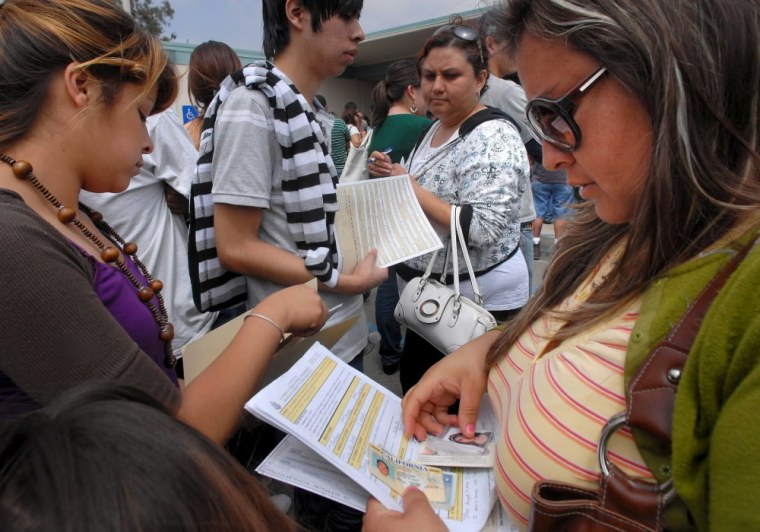Have you heard the news? Starting today, you’re going to need a passport or other “passport-equivalent” document to enter (or re-enter) the United States.
What, you hadn’t heard? Tell me, what’s it like living in a cave?
Of course, if you’re reading this, chances are you’re already aware of the new rule. I mean, how could you not be, considering it’s been at least four years since the government announced its intention to tighten the requirements for cross-border documentation?
Then again, given the convoluted path the process has taken ever since, you could be forgiven for crawling into a cave and waiting for it all to be over.
Serial delays, shifting deadlines and a deluge of applications
Perhaps a brief history is in order.
Back in April 2005, the government unveiled the Western Hemisphere Travel Initiative (WHTI) with the laudable goal of streamlining and securing travel between the U.S. and Canada, Mexico, Bermuda and the Caribbean. It stated that a birth certificate and photo ID would no longer suffice for cross-border travel and that all travelers, including U.S. citizens, would henceforth need a passport or other WHTI-compliant document. It also set a target implementation date of January 1, 2007.
Well, it missed — or at least fell a little short of the mark. In the fall of 2006, the government decided that the January deadline (reset to January 23) would only apply to air travel and that the rule for travel by sea would be pushed back to “at least” January 2008 (to coincide with the proposed land-travel rule). Blame it on the glacial pace of government action or the relentless pressure of cruise-industry lobbyists, but the 11th-hour switch left many Americans asking, “Well, do I need a passport or not?”
It depends, said officials, although they went on to recommend that people be proactive and get one just in case. (Hey, you never know when the rules might change again.) Given that, one would assume that the Passport Office would be prepared to handle the applications it must’ve suspected would come its way. Alas, one would be wrong.
In fact, the Passport Office was caught completely unprepared for the flood of applications that hit in the spring of 2007. The resulting backlog swamped the system, pushing processing times of three or four weeks to three or four months, prompting thousands of frantic phone calls and office visits and putting countless vacations at risk. The situation got so bad that the government actually had to set up a waiver system whereby people who could prove they’d applied for a passport could travel without one.
Oh yeah, and the deadline for travel by land or sea got pushed back to June 1, 2009.
No more snafus, no more excuses
So, here we are, four years after WHTI was announced and the question remains: Is everybody ready for the transition?
The government says it is, in part due to a major investment in new technology designed to facilitate the screening process. Much of this is related to the development of the passport card, a less-expensive, wallet-sized alternative to the traditional passport book, and new enhanced driver’s licenses (EDL), which are currently available to residents of Michigan, New York, Vermont and Washington. (The card and EDLs are RFID-enabled so they can be read wirelessly, but they’re valid only for travel by land or sea, not by air.)
And experienced travelers are probably ready. Those who fly have needed a passport since January 2007. Those who cruise get warned repeatedly during the booking process that they should have WHTI-compliant ID (although, wouldn’t you know it, there are exceptions), while those who plan to drive across the border would have to be living in that aforementioned cave not to have gotten the news.
Unfortunately, though, getting the news and accepting the reality are not always the same thing. Even at this late date, it seems there are people out there who believe that they shouldn’t have to get a passport, passport card or EDL at all.
For some, the issue is that they never needed one before, so why should they need one now? Others consider it an insult that they need ID to enter their own country when millions of illegal immigrants all but waltz across the border. And still others suggest it’s a step along the road to a national ID card and a short hop to the black helicopters of the New World Order.
Honestly, I don’t know about any of that, but I do know this. If you don’t want to get a passport, you don’t have to. If you prefer to travel domestically, you certainly can. But if you plan to cross the border, do those of us who’ll be behind you in line a favor and have appropriate ID. After four-plus years of warnings, it’s not just about time; it’s long overdue.
Rob Lovitt is a frequent contributor to msnbc.com. If you'd like to respond to one of his columns or suggest a story idea, .
